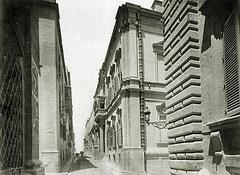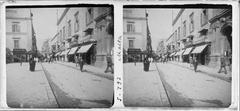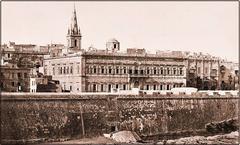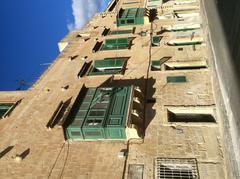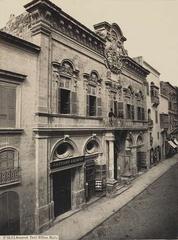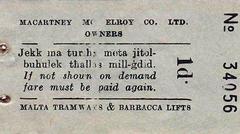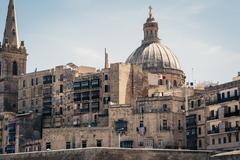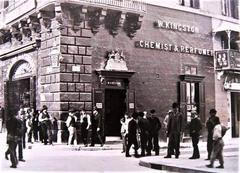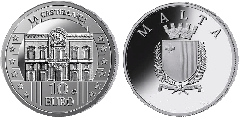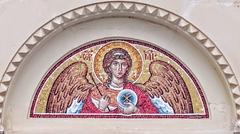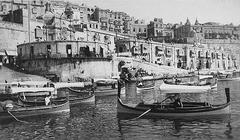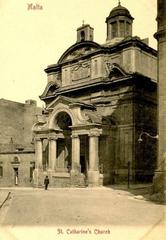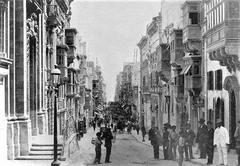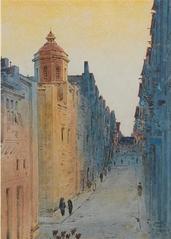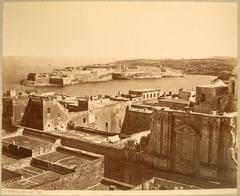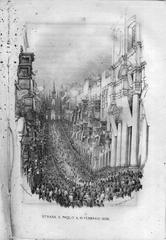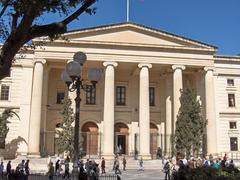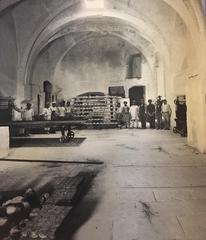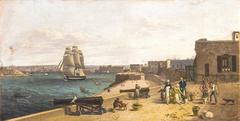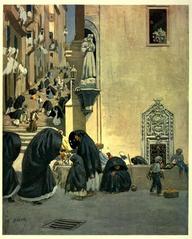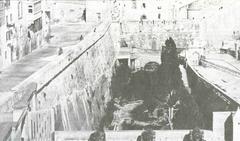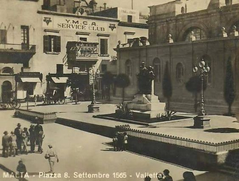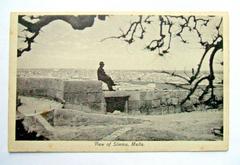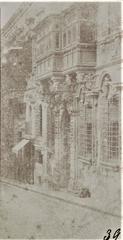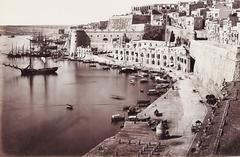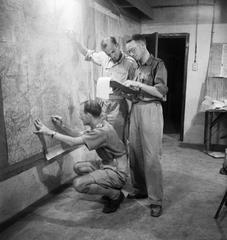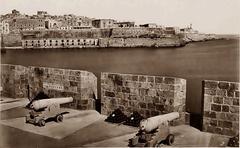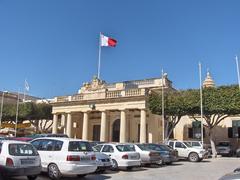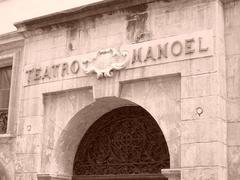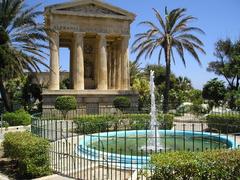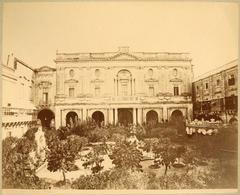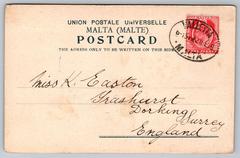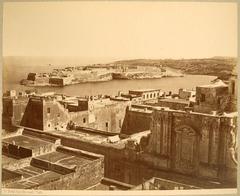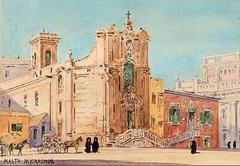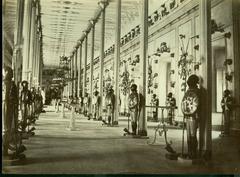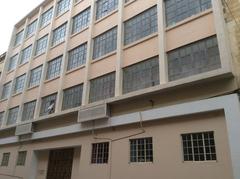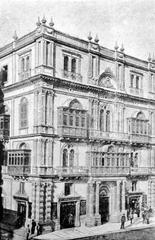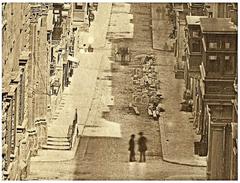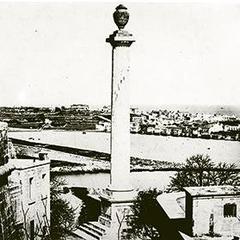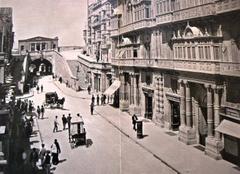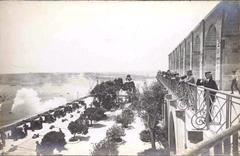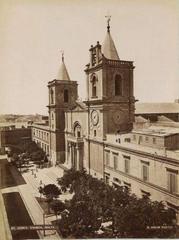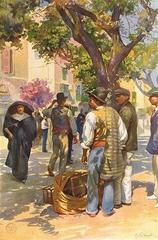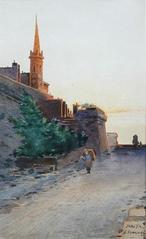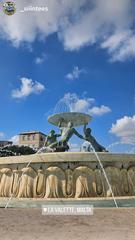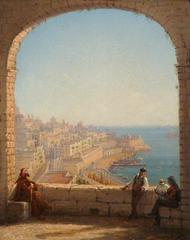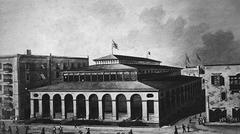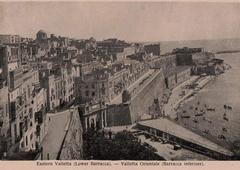A Complete Guide to Auberge de Castille: Visiting Hours, Tickets, and Valletta Historical Sites
Date: 14/06/2025
Introduction
Set atop Valletta, Malta’s fortified capital, the Auberge de Castille is a linchpin of the island’s historical, architectural, and political legacy. Originally established in 1574 as the residence for the Knights of the Langue of Castille, León, and Portugal, this Baroque landmark has witnessed the city’s evolution from a stronghold of the Order of St. John to the contemporary seat of the Maltese Prime Minister. Though its grand interior is generally closed to the public, the building’s stately exterior, intricate details, and commanding views make it a must-visit highlight for anyone exploring Valletta’s UNESCO World Heritage cityscape.
This guide delves into the Auberge’s history, architectural significance, and its enduring role in Maltese identity. It covers practical information for visitors—such as viewing hours, accessibility, and guided tour options—while offering tips on nearby attractions and how to enrich your Valletta experience.
For further details, official resources such as the Valletta Tourism Website, in-depth architectural analyses at e-a-a.com, and local travel narratives like Travel News and Report provide reliable information.
Table of Contents
- Introduction
- Historical Overview
- Visiting the Auberge de Castille
- Nearby Attractions
- Architectural Features and Symbolism
- FAQs (Frequently Asked Questions)
- Travel Tips
- Conclusion and Final Recommendations
- References and Resources
Historical Overview
Origins and Construction
The Auberge de Castille dates to the founding years of Valletta. Completed in 1574 by Girolamo Cassar, it initially served as a residence and headquarters for knights hailing from Castille, León, and Portugal (Wikipedia). In the 1740s, Grand Master Manuel Pinto da Fonseca commissioned Andrea Belli to redesign the building, resulting in the grand Baroque structure that stands today. Its location at Valletta’s highest point was strategic—overlooking the Grand Harbour and city fortifications, symbolizing the Order’s prestige and vigilance (TourHQ).
Evolution Through the Ages
- Knights’ Period: Served as an administrative and residential hub for the knights, hosting councils, feasts, and strategic meetings.
- French and British Eras: After the 1798 French occupation, the auberge became the French military headquarters and was subsequently repurposed for British military and administrative use (Academia.edu).
- World War II: Survived bombings and underwent restoration.
- Modern Malta: Since 1972, it is the official residence and office of the Prime Minister of Malta, hosting diplomatic summits and national ceremonies (Very Valletta).
Visiting the Auberge de Castille
Viewing Hours and Ticket Information
- Exterior Viewing: The public can admire and photograph the façade from Castille Place at any time—no tickets or reservations are needed.
- Interior Access: Generally closed to the public; rare exceptions include special events like Notte Bianca or pre-arranged tours during cultural festivals (Holidify).
- Guided Tours: Most Valletta walking tours include a stop at Castille Place, where guides share insights into the building’s history and architecture. Interior access is not typically included, but themed tours such as “Sinful Secrets of Valletta” provide a richer historical context (AllEvents.in).
Accessibility
- Location: Castille Place, at Valletta’s southeastern edge, easily accessible by foot from the city gate and main bus terminus (Travel News and Report).
- Mobility: The surrounding square is level and pedestrian-friendly, though Valletta’s overall terrain is hilly.
- Wheelchair Access: Approaches to the building are accessible, but interior access is not available due to its governmental role.
Nearby Attractions
When visiting Auberge de Castille, consider exploring these nearby historical sites:
- Upper Barrakka Gardens: Just a short walk away, these gardens offer sweeping views of the Grand Harbour and the Three Cities (Travel News and Report).
- St. John’s Co-Cathedral: A Baroque masterpiece renowned for its ornate interior.
- Grandmaster’s Palace: Former seat of the Order, now hosting the Office of the President and the House of Representatives.
- Is-Suq tal-Belt: Valletta’s restored covered market, perfect for refreshments and local cuisine.
- Strait Street: Historically the city’s nightlife hub, now vibrant with bars and restaurants.
Architectural Features and Symbolism
The Auberge’s Baroque façade is characterized by:
- Symmetrical Pilasters and Corinthian Columns: Offering vertical grandeur and classical balance (e-a-a.com).
- Decorative Heraldic Emblems: Displaying Grand Master Pinto’s coat of arms, symbolizing the Order’s power (Vassallo History).
- Limestone Construction: The honey-colored stone glows under the Mediterranean sun, enhancing the building’s imposing presence.
- Grand Staircase and Interior Halls: While not open to the public, these spaces are famed for their marble floors, ornate ceilings, and ceremonial function.
The building’s placement at Valletta’s highest point also reflects strategic priorities of defense, governance, and visibility.
FAQs (Frequently Asked Questions)
Q: Is the Auberge de Castille open to the public?
A: The interior is not open except during special events. The exterior is viewable at any time.
Q: Are tickets required?
A: No tickets are needed to view the building’s exterior.
Q: Are guided tours available?
A: Walking tours of Valletta typically include Castille Place and the Auberge as a highlight, but do not enter the building.
Q: Is the area accessible for people with disabilities?
A: The main square is accessible, though Valletta’s hilly streets may challenge some visitors.
Q: When is the best time to visit?
A: Early morning or late afternoon for optimal lighting and fewer crowds.
Q: What other attractions are nearby?
A: Upper Barrakka Gardens, St. John’s Co-Cathedral, Grandmaster’s Palace, and Is-Suq tal-Belt market.
Travel Tips
- Photography: The façade is best captured in soft morning or golden-hour light.
- Events: Check for special openings during events like Notte Bianca.
- Guided Tours: Book in advance, especially during peak tourist seasons.
- Respect the Venue: As an active government building, be mindful of security and avoid obstructing entrances.
- Combine Experiences: Plan a walking circuit to include other historic sites and local eateries.
Conclusion and Final Recommendations
The Auberge de Castille epitomizes Malta’s rich historical and architectural journey—from the era of knights to the heart of modern governance. Its Baroque grandeur, strategic position, and enduring role in national life render it an essential stop in Valletta. While interior access is restricted, the exterior and its surroundings offer a wealth of photographic and cultural opportunities. Pair your visit with guided tours or nearby attractions for a comprehensive Malta experience.
For the most current information on special events, tours, and accessibility, consult official sources such as the Government of Malta, the Valletta Tourism Website, and local cultural platforms. Download the Audiala app for curated walking tours and insider tips, and follow us on social media for up-to-date travel inspiration.
References and Resources
- Auberge de Castille - Wikipedia
- Very Valletta. The Auberge de Castille.
- GuideMeMalta. 7 Impressive Auberges That Will Leave You in Awe.
- Academia.edu. The Auberge de Castille et Leon.
- Travel News and Report. Valletta Jewel Carved in Stone and Time.
- Holidify. Auberge de Castille Sightseeing.
- TourHQ. The Auberge de Castille in Valletta: Its Facts and Secrets.
- Hazel’s Travels. Valletta Walking Tours.
- Government of Malta. Prime Minister’s Office.
- AllEvents.in. Sinful Secrets of Valletta – Blood, Booty and Courtesans Walking Tour.
- e-a-a.com. 20 Best Architectural Buildings in Malta.
